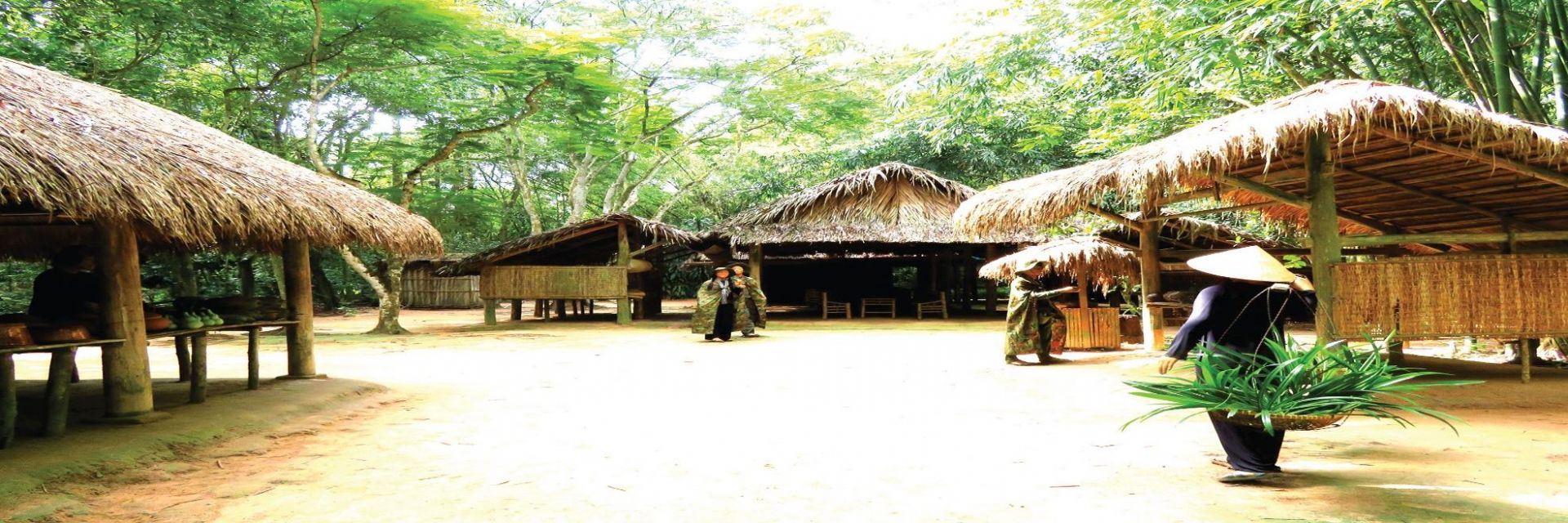Location of Cu Chi Tunnels
-
Address: TL15, Phu Hiep, Cu Chi District, Ho Chi Minh City
-
Opening hours: 8 AM - 5 PM (7 days a week)
-
Entrance fees (updated in 2022):
Ben Duoc: 110.000 VND/ person
Ben Dinh: 90.000 VND/ person
Cu Chi Tunnels (Địa đạo Củ Chi in Vietnamese) is situated in Cu Chi District, the outskirts northwest of Ho Chi Minh City, 70 kilometers away from the city center. The underground networks are well-retained in two spots: Ben Dinh Tunnels (Ben Dinh Hamlet, Nhuan Duc Commune) and Ben Duoc Tunnels (Phu Hiep Hamlet, Phu My Hung Commune).
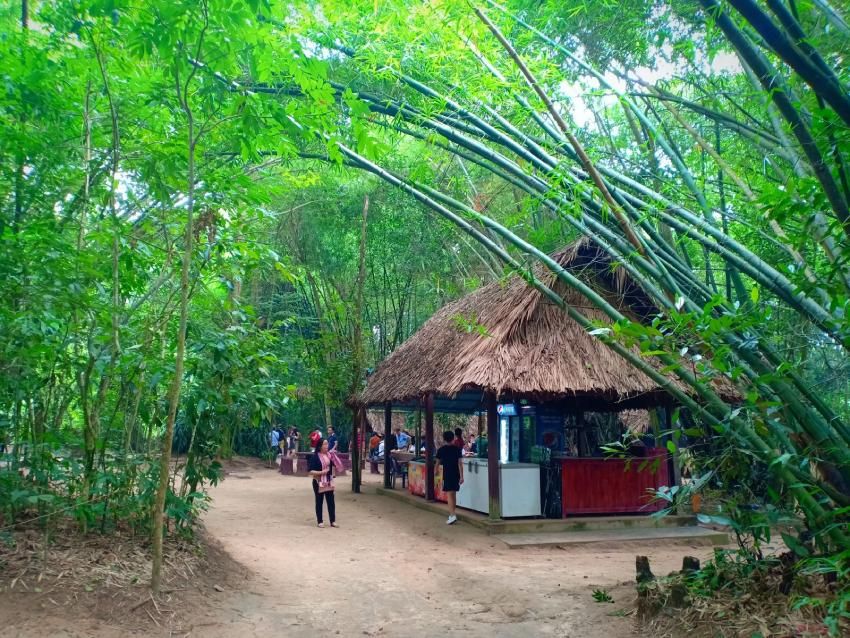
Despite the far distance from the vibrant center, this suburban district is worth visiting for its several tourist destinations and tunnel networks, such as fresh fruit gardens, Cu Chi Water Park, and Fosaco eco-village.
Cu Chi's weather is another factor to consider before your trip. Owing to the tropical climate, Cu Chi has two distinct seasons: the rainy season (May to October) and the dry season (November to April) - the best time to visit Cu Chi Tunnels.
A brief history of Cu Chi Tunnels
The Tunnels of Cu Chi, a gigantic underground tunnel system, was originally constructed under the jungle terrain, connecting tunnels among the hamlets and communes during the Indochina War (1945-1954) against the French colonialists. It served as a hiding spot for Vietnam revolutionary troops to discreetly commute between regions and evade French scouts.
During the Vietnam War, the network had been expanded into an assembly complex for Communist guerrilla soldiers to house troops, transport communications, and supplies, receive medical treatments, take shelters from aerial bombardment, and mount surprise attacks, after which they could disappear underneath the ground. As a military headquarters, Cu Chi Tunnels played a pivotal role in the Vietnamese forces' resistance to the American army in South Vietnam. It served as an isolated stronghold to plan strategies and launch successful military campaigns, notably the victorious Tết Offensive in 1968.
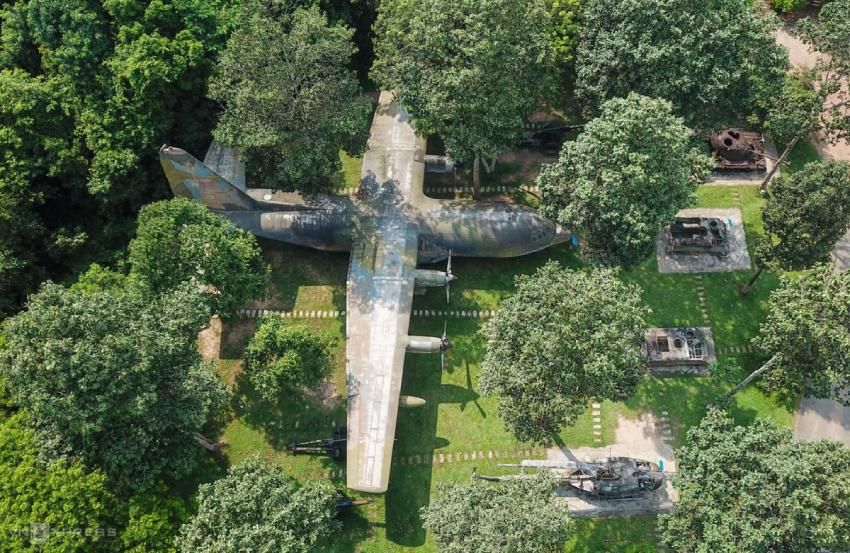
Throughout the country's turbulent history, these iconic Saigon tunnels witnessed the sufferings of the fierce wars and symbolized the tenacity and resourcefulness of the Vietnamese people. Cu Chi Tunnels is listed in the top 7 must-visit epic and adventurous places in Southeast Asia by The Travel and one of the world’s coolest places by The New York Times.
Inside the Tunnels of Cu Chi
Stretching to the Cambodian frontier, the system of Cu Chi tunnels used to reach a total length of nearly 250 kilometers, of which 120 kilometers have been well-preserved and available for public visit nowadays. The complex of Cu Chi Tunnels in Saigon astounds visitors with its intricate architecture and resilience in the area of clay soil mixed with laterite.
On the ground level, there are hundreds of inventive booby traps and counterfeit bunkers set up to impale and deceive enemies. The entrances to these tunnels are so narrow that only Vietnamese could fit in, with wooden manhole covers camouflaged by leaves.
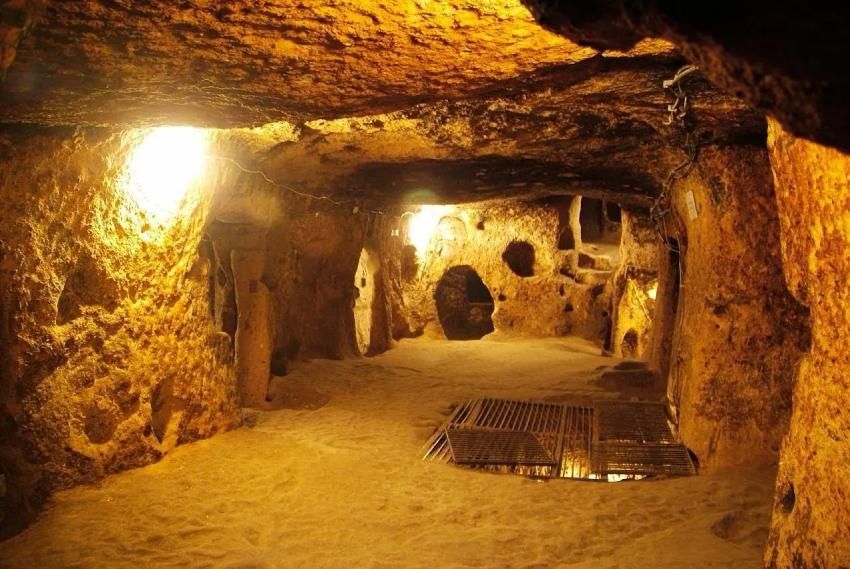
The underground part of the hidden system features three deep levels where numerous passages are connected through a central axis and extend to the Saigon River. The first level (3 meters underneath the ground) was capable of withstanding chemical warfare, bullets, tanks, and armored vehicles, whilst the second one (5 meters from the ground) could resist the destructive power of bombs. The third level is the deepest (more than 8 - 10 meters from the ground). Between the levels, escape hatches were made to counter toxic gas along with unrevealed vents leading to the ground. Communications passages were constructed 0.8~1.2 meters in size with a minimum 1.5 meter-thick roof.
A little-known fact about Cu Chi Tunnels is that Vietnamese soldiers excavated this immense underground network with hundreds of kilometer-long tunnels just by hand and primitive tools. The tunnels' inner structure is likened to a man-made underground city since it accommodated necessary facilities for a thousand soldiers and dwellers, such as kitchens, hospitals, theaters, armories, chambers, and command centers.
Things to do in Cu Chi Tunnels, Ho Chi Minh City
Experience the Cu Chi Tunnel complex
Cu Chi Tunnels now function as an outdoor war memorial accessible to tourists of all nationalities. The 120-meter-long tunnel system is retained and operated in two spots with various fascinating activities.
-
Ben Dinh Tunnels
Ben Dinh was reconstructed and enlarged to attract visitors; thus, it is a crowded section of Cu Chi Tunnels’ network. Situated next to the Saigon River, Ben Dinh Tunnels has a convenient location where Cu Chi Commissioners led the troops and escaped to the river if any emergency arose. It was used for a long time, from 1968 to 1975.
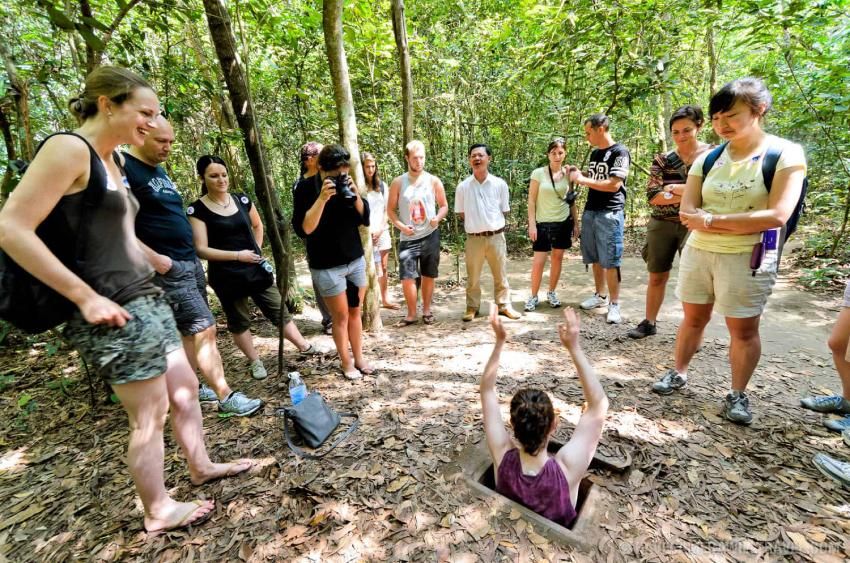
After entering the site, you would start from a thatched hut that exhibits a map of the region, layouts of the tunnels, and black and white documentaries to fill you in on the background. When you head into the jungle, local guides will show you how dangerous booby traps and concealed pits were. Then, after 45 minutes to an hour on the underground tour, you will see old amenities in the tunnels, impressive demonstrations, and listen to intriguing stories about people who used to live here.
-
Ben Duoc Tunnels
Cu Chi Ben Duoc Tunnels (100 hectares) is five times bigger than Ben Dinh Tunnels (6,7 hectares) but less touristy. Ben Duoc is a favorable site for adventurous individuals hankering to gain hands-on experience inside the underground city of Saigon. It enables visitors to challenge themselves to crawl through cramped and rough tunnels on a deeper level. The original tunnels have been extended and restored by cementation and installation of lights to make the journey safer and less harrowing than in the past. There are also emergency exits every 10 meters.
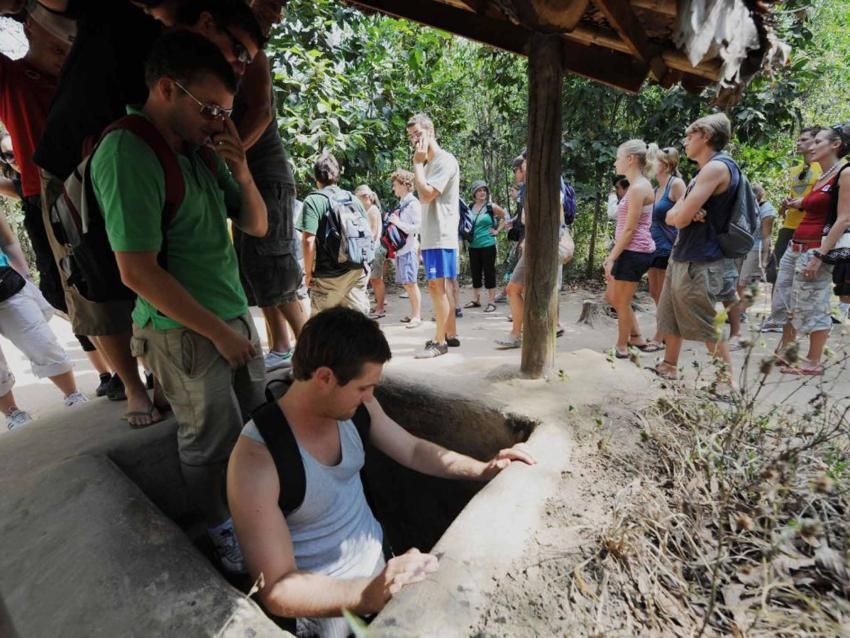
*Please note that this activity is not recommended for those who have breathing problems, high blood pressure, or claustrophobia.
These practical experiences will give you a clear picture of the Vietnamese soldiers' harsh living conditions during the war. Ben Duoc also houses worthwhile historical landmarks such as Hoang Cam Kitchen and Ben Duoc Memorial Temple.
Sightsee the Military liberation zone’s reenactment areas
These areas reenact the fiercest period of war from 1961 to 1972 in South Vietnam, offering visitors vivid experiences as if they were traveling back in time. Three sections in the site reflect the enduring life of Vietnamese guerrilla soldiers and Cu Chi locals during wartime and the desolate village scenes ruined by toxic chemicals, artillery, and bombing raids.
Play gun-shooting and paintball-shooting
Besides the underground experiences, the Tunnels of Cu Chi afford exciting military sports that fascinate many foreign tourists. Both Ben Dinh and Ben Duoc have shooting ranges, allowing participants to handle weapons used during the war, such as AK-47s and M16s, under the staff’s instructions.
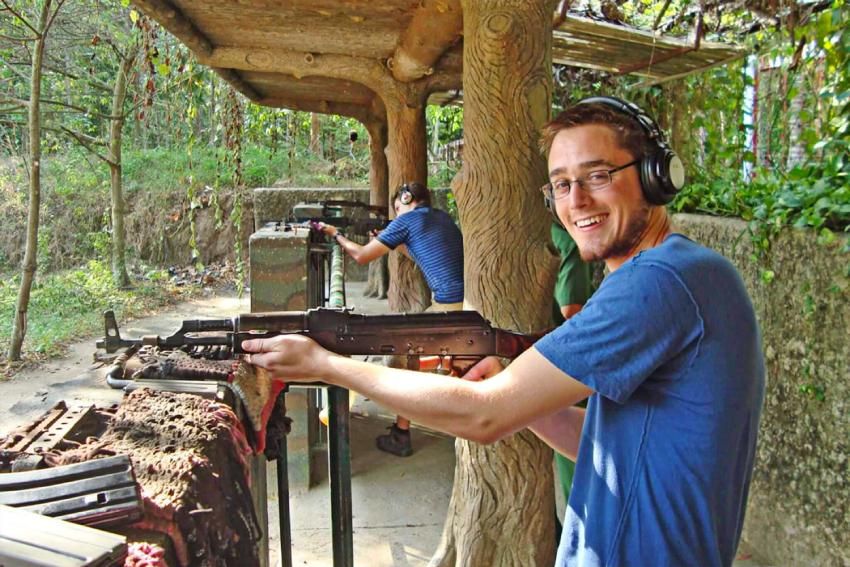
In paintball shooting, players will be equipped with masks, uniforms, armor, and guns for their combat in the natural forest. These war simulator games will help you experience the shooting, team collaboration, and fighting spirit as soldiers of the past.
Tickets for shooting range: 50.000 VND/ person/ 60 minutes.
*Participants are required to have good health conditions and a minimum age of 16 to join shooting activities with real guns.
Visit Cu Chi Wildlife Rescue Station
The Wildlife Rescue Station of Cu Chi (Animal rescue station in Cu Chi) is located between Ben Dinh and Ben Duoc, about 8 kilometers away from the center of the tourist area. The Cu Chi station 4,000 square meters is considered the largest rescue center in southern Vietnam.
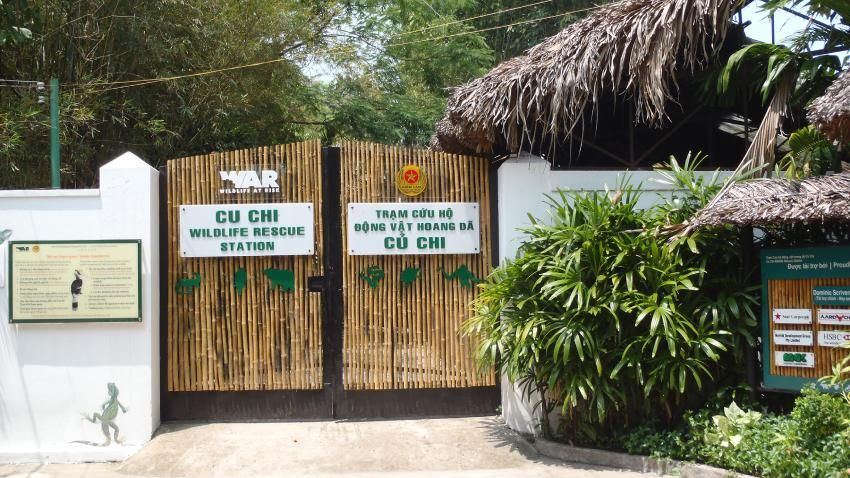
Established in 2006, Cu Chi Wildlife Rescue Station is the result of a heroic effort to protect 5500 rare animal species on the edge of extinction from an alarming decrease in Vietnam. This is also home to vulnerable creatures often harmed by relentless trapping, long-time abuse, and extreme confinement. Your visit to the Cu Chi rescue center would be a support to these endangered animals and the dedicated staff and a chance to broaden your knowledge about nature conservancy's significance.
Cu Chi Tunnels is not only a famous tourist attraction in Ho Chi Minh City but also a lasting national monument. The spider-web-like tunnels are a solemn reminder of the infamous war events in Vietnam, offering a unique experience that you cannot find anywhere else in the world.



